We’ve been raising grass fed beef for over 20 years. Â We’re still improving.
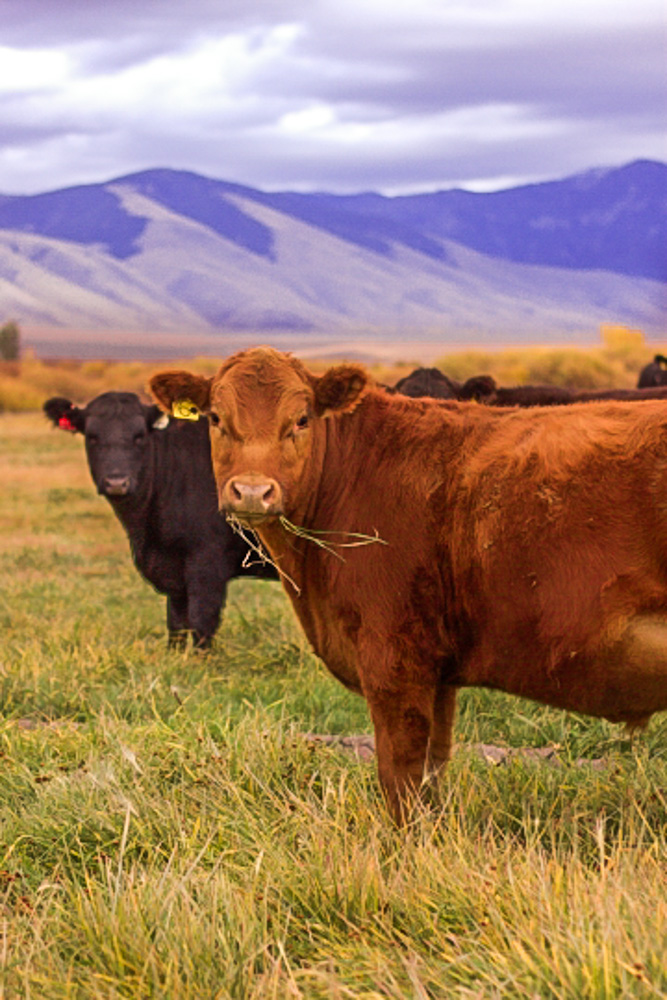
I got an email this morning from Claudia, one of our regular customers: “We had two of the ribeyes last night, and they were absolutely wonderful! My husband was duly impressed, so much so that we ordered more, as well as some NY strips and another chuck roast (which we love).”
We get a lot of these comments. What makes Alderspring’s grass fed beef great? Why did Ian Brown, in a Globe and Mail review, say that an Alderspring steak had flavor that was “like being inside a cave of beef taste?”
Like most great things, there is not a single factor that creates greatness, but rather a careful orchestration of a number of factors, that together make something wonderful. Over the last 20 years we’ve found, through trial and error and simple observations, that there are 12 things that make a great steak. The biggest surprise you’ll notice about our 12 factors is that half of them happen to the beef”¦post mortem.
It took a little more time to describe these 12 contributors to great grass fed than I originally thought it would, so I put it in two installments. This week’s installment has to do with the husbandry principles that we discovered are key to excellence.
Perhaps I should briefly define excellence as I see it with regard to beef. Of course, we want the steak to be immensely enjoyable. Flavor that resonates with the human palate is paramount, as a very flavorful but chewy steak is serves us a better memory than a flavorless tender one. Flavor, as you probably know, along with smell, is the sensory center with the highest degree of memory association. Grass fed beef can have off-flavors, and much care is needed to produce a good tasting steak consistently.
But texture is very important as well, because even a flavorful steak is a poor experience if one has to chew and chew.
So. We are after a steak that is both flavorful (in a good way) as well as having good mouth feel and chew. The great thing is that a well-finished beef will have both, as it is fat that helps carry the flavor and provides moisture for maximum tenderness.
But for me, a quality steak goes beyond sensory perceptions. We humans often tend to combine thoughts with sensory. For instance, preconceived ideas or memories can ruin the most flavorful of fare.
Enter guilt, one of those nasty little party crashers. And it is one that as a beef eater, I am well aware of (maybe I know too much!). I can have a hard time enjoying a steak if it: may be detrimental to the health of me or my family; may come from some foul feedlot with poor living conditions for an animal; or may be from a farm that is harming fish or wildlife.
So excellence, for me at least, has more to do than with just eating experience.
Well, here goes; an Alderspring beeve’s memoir of a journey to excellence. Here are six skills and considerations of the grazier (the person in charge of the animals and the land they graze on) that are critical components of great grass fed beef.
1. The Grass. Farmer Brown just calls Bessie the cow over and opens the gate to the pasture; in she goes! After a summer out there, he calls her back and butchers her. Indeed, Farmer Brown just grew grass fed beef by definition. But is it good? Probably not.
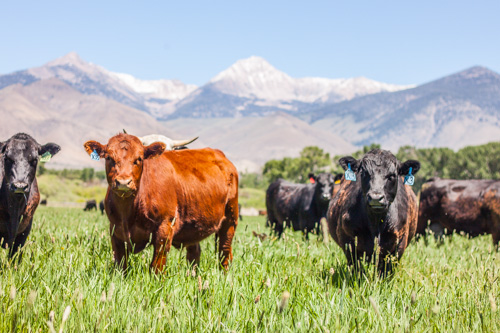
At Alderspring, we’ve found that specific types of grass can define flavor and even tenderness. In addition, the diversity of plant species on the pasture plate plays an important role. For instance, we have had our beeves graze pure stands of alfalfa that would be a dairy producer’s dream”¦only to become our nightmare when upon flavor testing our ribeyes taste very much like aged liver! This guideline ends up being the Achilles heel of many grass fed producers because of their wrong thinking that that just because Bessie seemed to thrive on it, then the beef must be good. So much for that repeat customer, unless they really like liver. Care for any onions to go with that?
2. The Timing of Grass. We humans like to keep it simple. Farmer Brown played golf all summer while Bessie was locked in her pasture. In fact, Bessie spent quite a bit of time piningaway at the fence in lust over the neighbor’s pasture (Brown never noticed her because after the 18th hole, he went to the water hole with his buddies).
Cows are made to move. They have legs, after all. Their ancient forebears covered thousands of square miles in a lifetime. That is why on Alderspring, beeves are always on the move. On the summer range, they have 70 square miles on which to roam. If on the ranch, we move them to a new paddock, sometimes every few hours, but always every couple of days. It provides them a chance to balance their own diets. Beeves know best.
3. The Wintering Life. All beeves must live through at least one winter when our North American grasses go dormant. Poorly harvested hay makes poor beef. These poor winter rations can even affect flavor and tenderness on beeves harvested the following summer.
We like to say that our hay is “packaged summer sunshine”. If that is so, it should look like it. The supplemental winter hay that we feed out on Alderspring’s pastures looks, smells and feels like our summer grass. The beeves come running from all over our meadows.
Under grass fed beef rules, the animals can be confined in a feedlot and fed non-grain vegetative rations during the non-growing season. USDA defines growing season as the average frost free dates, which for us would be May 15-September 1. That means our cattle would only have to be on pasture during those dates, and could be in a feedlot, feed yard, corral or any sort of disease and fecal-matter-concentrating confinement the rest of the year. Can you tell I really detest feedlots? We have found that beef quality depends on the animals being able to range freely even in the winter, continue to eat stockpiled pasture, and be free, healthy, and we believe”¦happy!
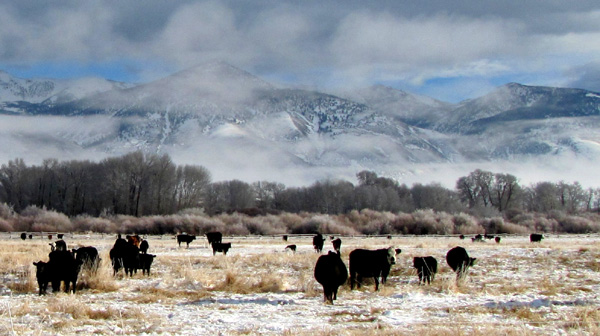
4. Genetics. We hear about hybrid corn and GMOs in plants. Well, what about animals? It turns out that we aren’t in Kansas anymore in bovine genetics. Surprise!
Roll the clock with me back a few years to a frosty January morning some 8000 years ago. You are standing at the mouth of your cave in the Bavarian highlands thinking you need to go back in to get some more skins on before you venture out. Before turning, you note a distant herd of Aurochs, grazing happily in the frigid cold. These are the wild beasts of Bovinus that roamed the European continent. They had to be naturally good at fat deposition because no caveman like you was out there throwing hay at them when brutal cold from Siberia came on the East wind (self-centered you was thinking only of not freezing your own keister off!). Indeed, those ancient beeves needed a good fat layer to stay alive. Skinny beeves simply died. It was from these ancient bloodlines that many of our northern breeds of beef cattle came from: Angus, Herefords, and Highlanders.
The 21st century cow has drifted far from her ancestors, and that drift has accelerated exponentially over the past 50 years with the advent of artificial insemination. Intensive crossbreeding and linebreeding have led to animals bred for only a few traits—the most dominant of all in beef cattle: growth. The quest for gain has created animals that never get fat on even the most excellent of pastures that their ancestors thrived on. Add lots of corn or other simple carbohydrate concentrate feeds in a feedlot bunk, and these animals demonstrate legendary gains sometimes exceeding 5 lbs at day. And fat they do get, but the fat is lacking in the benefits that grass fed fat has to offer.
And therein is one of the greatest problems for today’s grass fed beef raiser. Most of the grass fed beef marketed in the U.S. is very lean. Check out any supermarket shelves or website that markets grass fed and you’ll find beef that is lean, typically grading USDA “select.” This is ironic, because most of grass fed beef’s reported health benefits (e.g., omega 3 fats, conjugated lineolic acid, vitamins) are found in the fat. At Alderspring, our goal is to have all of our beef grade at least USDA “choice.”
We have searched for ancient cattle genetics to ensure that our beeves naturally achieve fat deposition on healthy pasture. This is no small feat, as it is estimated that less than one tenth of 1 percent of all beef cattle in the US exhibit the ancient traits of pasture fattening. But we are unrelenting in our search and our attempts to reconstruct our own herd that produces these essential fats for human health.
5. Low stress management. Inflammation caused by stress is now billed as one of the largest risks to human health. Why should cows have it any different? In addition, if they are not healthy, why should their meat be healthy for us, the eaters of them?
I recall an old horseman who once told me that the advent of the automobile was the best thing that ever happened to horses. Surprised, I asked why, as I had always thought that it was nearly the end of horses in our country.
He looked me straight in the eye and said it was because people who had no business owning a horse no longer had to.
The same goes for cows. I’m going to call a spade a spade here. There are people in the business of grass fed beef because of the dollar value that the niche market offers. They have no other business owning beeves, and their mistreatment of them goes beyond their farm or ranch with tough and off-flavored beef. I think it is bad for the humans eating the beef too. I’ve worked with numerous ranchers over the years, and observed many more, and I find mistreatment through stressful livestock handling practices is more common than not. Grass fed or not grass fed.
I can always tell the relationship between beeves and their owner by how afraid the animals are of me. And I’m here to tell you that fear is a prevalent condition among today’s beeves.
6. Living soils. It is estimated that in a living pasture soil, the population of individual organisms in a teaspoon exceeds the number of human inhabitants of earth. These creatures (small animals, insects, bacteria, fungi) work with plants in symbiosis by providing nutrient dense soils for the plants to thrive on. This in turn creates nutrient dense grasses, which in turn build healthy bone and muscle tissues in our beeves.
The next step involves us, the eaters of them. Nutrient dense human food is the end result of living soil.
The lack of nutrition density in food produced worldwide as of late is thought to be the foundational cause for the recent rash of cancer and autoimmune diseases that run rampant through our culture.
It all comes back to a living soil to inject those much needed nutrients into the food chain in the first place.
On Alderspring, we believe that grass fed beef raised on soils with a current or recent history of tillage and conventional chemical agriculture fails to have the nutrient density needed for both the bovine and human eater to thrive on. The soil is merely medium on which to apply chemical amendments. Indeed, it is dead. Much of today’s grass fed beef is grown on GMO crop residue or planted forages that grow on these highly manipulated and dead soils. Is it any wonder that so many folks that try grass fed beef are disappointed with the flavor or tenderness?
Living soils, and the nutrient density associated with them allow us at Alderspring to practice a form of agriculture unique today, yet ancient: the pasturing of wild rangeland landscapes. This prehistoric model did not disturb soil biota because it involves no tillage and no chemicals; just the elegant symbiosis of plant, soil, sun, and animals. This is one of few types of agriculture that works in concert with still wild systems without disturbing them ecologically.
And it makes for some of the most flavorful, nutrient-dense beef in the world.
Stay tuned for Installment 2: Six Processing Protocols for Great Grass Fed.

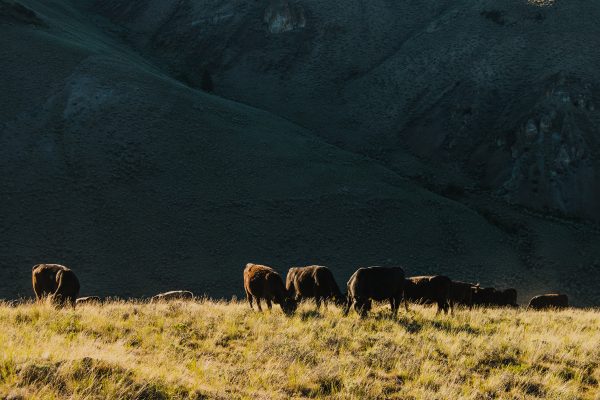


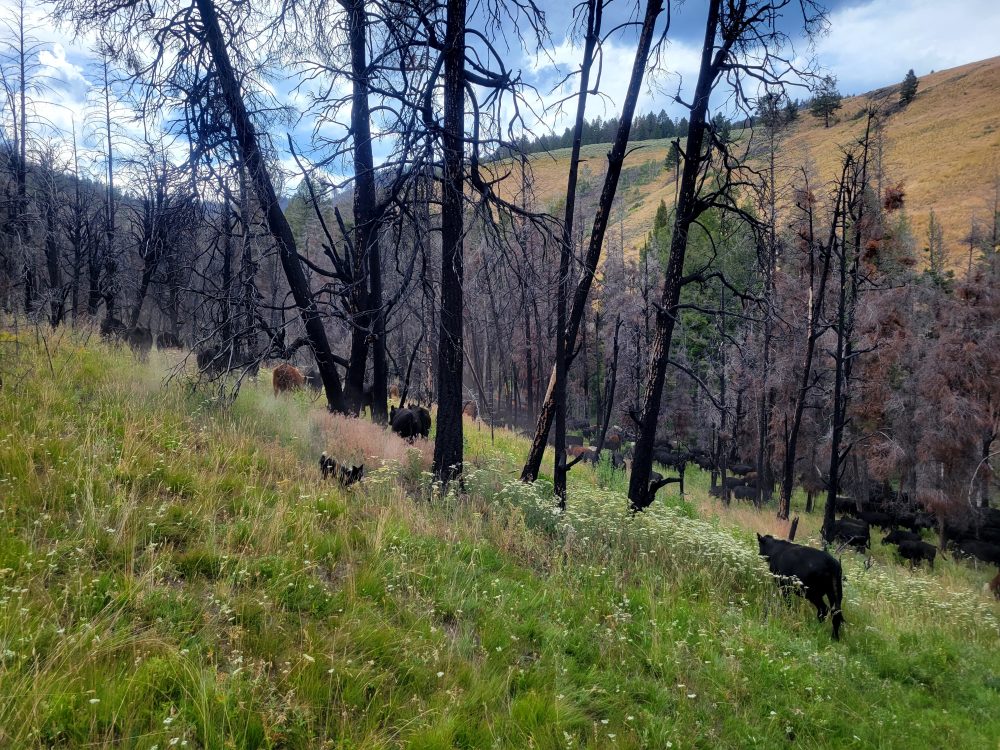


Leave a Reply